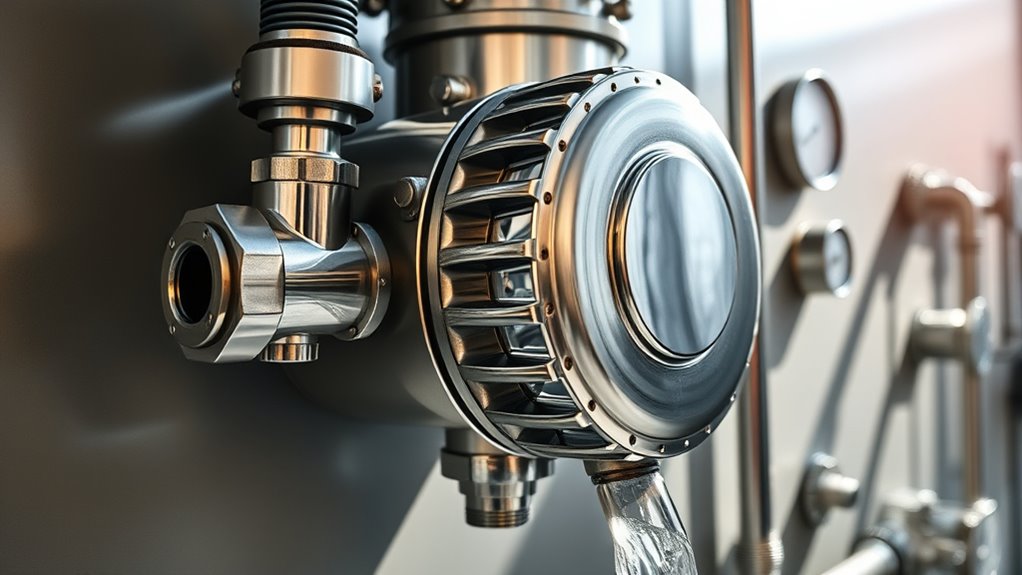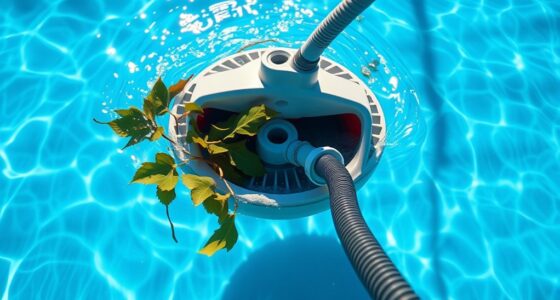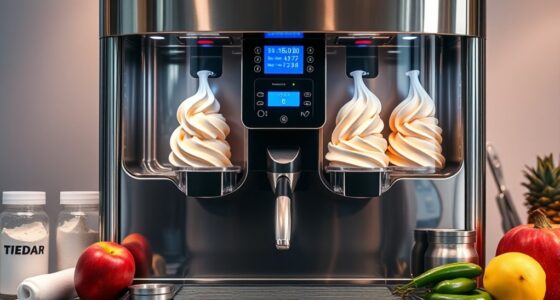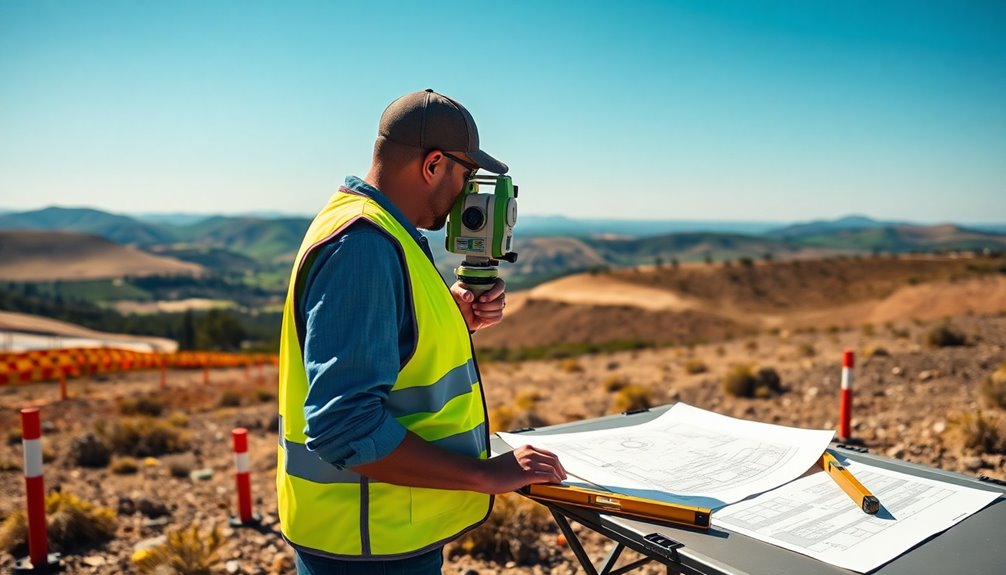If your household water pressure stays below 40 psi, a booster pump can help improve water flow, making showers stronger and appliances work better. Low pressure can cause weak streams and less efficient operation, so knowing your current pressure is important. If you’re experiencing these issues regularly, installing a booster pump might be the solution. Keep exploring to find out how to determine if you need one and what’s involved.
Key Takeaways
- Measure your household water pressure to determine if it falls below the recommended 40-60 psi for fixtures like showers.
- Low water pressure can cause weak streams and appliance malfunctions, indicating a booster pump might be needed.
- If existing plumbing has pressure-reducing valves or inconsistent flow, a booster pump can help stabilize pressure.
- Consider your water usage needs; appliances like washing machines and showers require steady, adequate pressure for optimal operation.
- Consult a professional to assess your system, ensuring a booster pump is necessary and properly installed for your household.
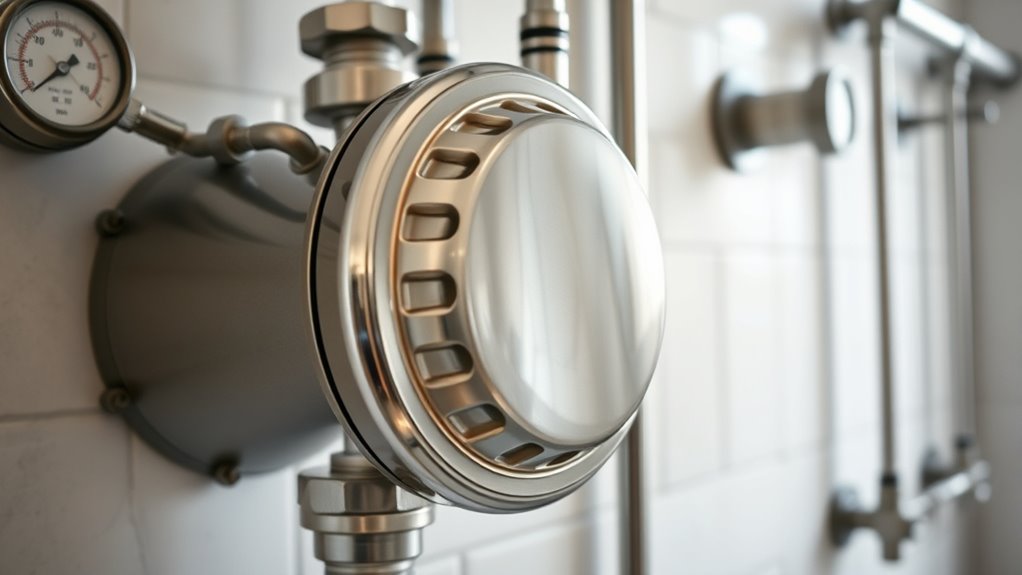
Have you ever experienced low water pressure in your home or noticed your appliances aren’t functioning as efficiently as they should? If so, you’re not alone. Many homes face issues with inadequate water flow, especially in multi-story buildings or areas with fluctuating municipal pressure. To determine if a booster pump is the right solution, you need to understand your pressure requirements. Different fixtures and appliances demand specific pressure levels to operate effectively. For example, a shower typically needs around 40-60 psi to deliver a comfortable spray, while a washing machine might require a steady flow to function properly. When your household water pressure falls below these recommended levels, it can lead to weak water streams, longer fill times, and even damage to certain appliances.
Low water pressure can cause weak streams and appliance issues; understanding your pressure needs is key to choosing the right solution.
The first step is evaluating your current water pressure. You can do this by attaching a pressure gauge to a hose bib or faucet and recording the reading. If your pressure is consistently below the recommended range, a booster pump can help. But before proceeding, it’s important to consider your existing plumbing system and whether it can accommodate pump installation. Some homes may already have pressure-reducing valves or other components that limit flow; these might need adjustments or upgrades to work seamlessly with a booster pump.
Installing a booster pump isn’t a one-size-fits-all process. You’ll want to select a pump that matches your pressure requirements, guaranteeing it provides enough force without over-pressurizing your system. Proper pump installation is essential for safe and effective operation. It involves connecting the pump to your main water line, ensuring it’s properly grounded, and integrating a pressure switch that automatically activates the pump when water pressure drops below a set level. This automation helps maintain consistent flow and prevents damage caused by running the pump dry or at excessive pressure. Additionally, advancements in automation technologies are making these systems more efficient and easier to manage. Understanding the pressure requirements of your household fixtures can help you choose the most suitable pump for your needs.
Keep in mind that a booster pump isn’t a permanent fix for all water issues. Sometimes, underlying problems like pipe leaks or municipal supply issues need addressing. But if your low water pressure stems from inadequate pressure requirements within your home, a well-chosen and correctly installed pump can considerably improve your water flow. It’s a practical way to guarantee your appliances operate efficiently, reduce frustration during showers, and extend the lifespan of your plumbing fixtures. Just remember to consult a professional for the pump installation to guarantee everything functions smoothly and safely. Properly assessing your water pressure levels can help prevent unnecessary expenses and ensure you select the right solution. Additionally, understanding the compatibility with existing plumbing can help ensure the pump integrates seamlessly with your current system.
Frequently Asked Questions
How Long Does a Booster Pump Typically Last?
A booster pump usually lasts around 5 to 10 years, depending on usage and maintenance. To maximize its pump lifespan, follow regular maintenance tips like checking for leaks, cleaning filters, and ensuring proper electrical connections. Keep an eye on performance issues such as unusual noises or pressure drops, which can indicate problems. Proper upkeep helps your booster pump operate efficiently and extend its lifespan, saving you money and ensuring consistent water pressure.
Can a Booster Pump Increase Water Pressure in All Homes?
Imagine you’re showering, and the water flow suddenly slows. A booster pump can help increase water pressure in all homes by enhancing water flow, especially when pipe diameter is small or pressure is low. It works by boosting pressure before it reaches your fixtures. So, yes, a booster pump can improve water pressure throughout your home, ensuring consistent flow regardless of pipe size or initial pressure.
What Are the Signs That My Booster Pump Needs Repair?
If your water flow decreases or becomes inconsistent, it might be a sign your booster pump needs repair. You’ll notice strange noises, leaks, or the pump running continuously, which indicates issues. Regular pump maintenance helps prevent problems and keeps your system working efficiently. Addressing these signs promptly guarantees your booster pump functions properly, maintaining steady water pressure and avoiding costly repairs down the line.
Is a Booster Pump Noisy During Operation?
If your water pump noise is unusually loud or you notice excessive pump vibration, it could indicate a problem. A noisy booster pump often signals worn bearings or cavitation, while vibration might point to misalignment or loose mounting. These issues can cause performance drops or damage over time. You should inspect your pump regularly and address any abnormal sounds or vibrations promptly to keep it running smoothly.
How Much Does Installing a Booster Pump Usually Cost?
Think of installing a booster pump as planting a sturdy tree in your yard; it’s an investment that pays off. The cost estimate varies depending on your system and location, typically ranging from $300 to $1,000. The installation process involves connecting the pump to your existing plumbing, which a professional can handle efficiently. This upgrade improves water pressure, making your daily routines smoother and more reliable.
Conclusion
Think of your water system like a garden hose. Without a booster pump, it’s like trying to water your plants with a gentle stream—not enough reach or pressure. Adding a booster pump is like turning up the flow, giving your plants the boost they need to thrive. If you want your water to reach every corner with strength and clarity, then a booster pump is your trusty helper, ensuring everything flows smoothly and efficiently.
